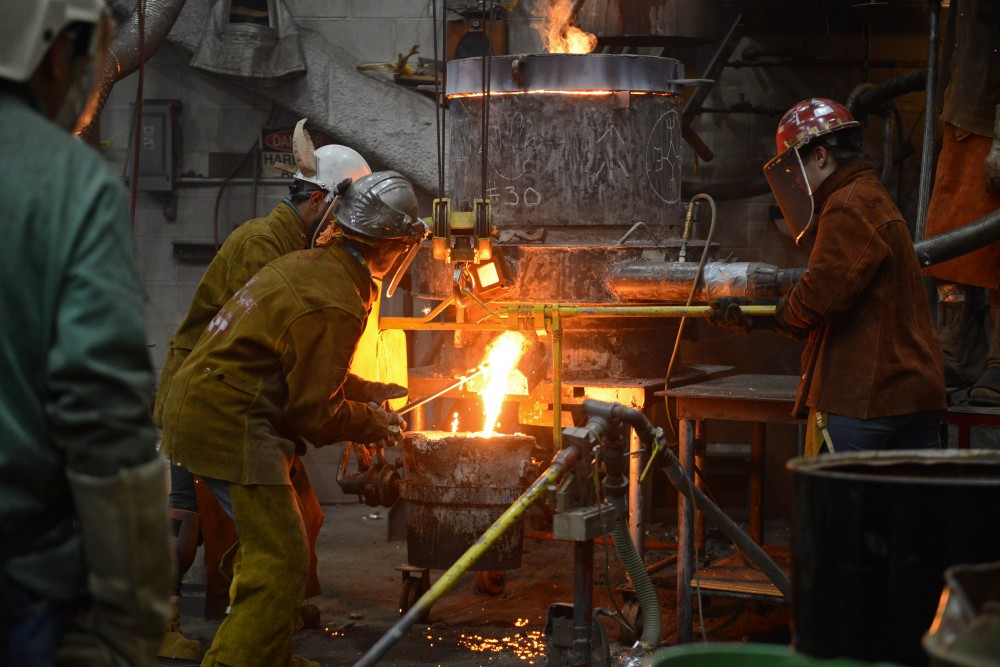On Friday, the University of Minnesota art department hosted its 30th Annual Thanksgiving Iron Pour at the Katherine E. Nash Gallery.
The event allowed students to exhibit the skills they learned in their metal casting classes, fulfilling a sculpture credit that fine arts majors are required to take.
“For students, it teaches them the value of their community,” said Tamsie Ringler, assistant professor of sculpture and leader of the pour. “It helps people learn collaboration and how to make their art better. It’s a class, but it can be more than just a requirement.”
Ringler, an artist whose work is on display at the Weisman Art Museum, took over the iron pour organization from longtime University of Minnesota professor Wayne Potratz.
Potratz was on hand to assist Ringler in helping the students work safely.
“It’s definitely one of the most dangerous art forms you can work with,” Ringler said. “Inside the furnace, things reach about 2,800 degrees. It isn’t just hot, it could peel your skin.”

Dozens of students work all semester to learn about metal casting and where the near-ancient art is used.
Still, students were able to glean insight from the experience that reached further than just how to use the art form.
“They learn to have the potential to be something,” Ringer said. “It becomes permanent. Universal. They learn to lift, carry and harness the power of hot metal. They’re also [given] the opportunity to change their view on how art is made and how to work towards a common goal.”
For fine arts major Prerna Jambunathan, the class and iron pour have provided an unexpected influence.
“It made me realize that I can do things I never thought I could do,” Jambunathan said. “It’s helped me get more comfortable giving things a try.”
Jambunathan worked as the live end during the pour — she was responsible for tilting and pouring the molten iron. Meanwhile, the dead end held the opposite side of the pour rod for balance. The skimmer checked the liquid for large chunks of imperfect iron.
These three individuals are a team. They must work in tandem to create the iron castings. Working together is vital to making iron casting safe and effective.
“For the longest time, I didn’t know what was going on,” Jambunathan said. “I learned quickly that I needed to take ownership of my actions. As an artist, you don’t usually have to worry about actively hurting yourself.”
For this year’s iron pour, students from the University of Wisconsin-Stout were invited to take part, expanding the University’s artistic community to include other Midwestern art students interested in working with their hands.
The foundry brimmed with young artists expressing themselves in an unexpected way.
“I think of it this way — you’re moving from something,” Ringler said. “You make a form. A moment. Then you move away from that to create something beautiful.”








